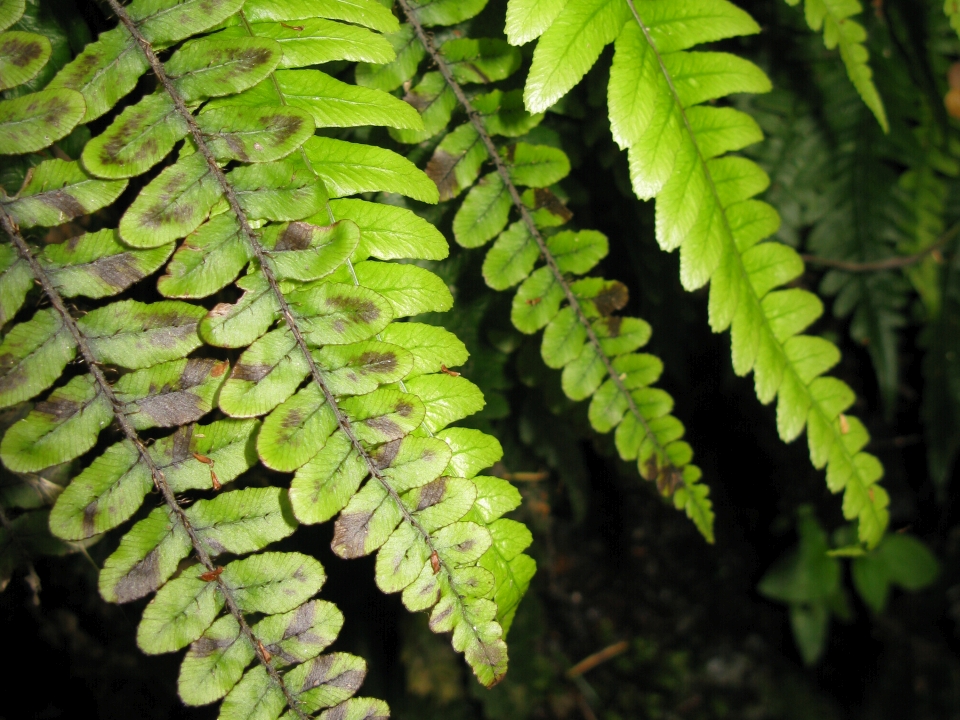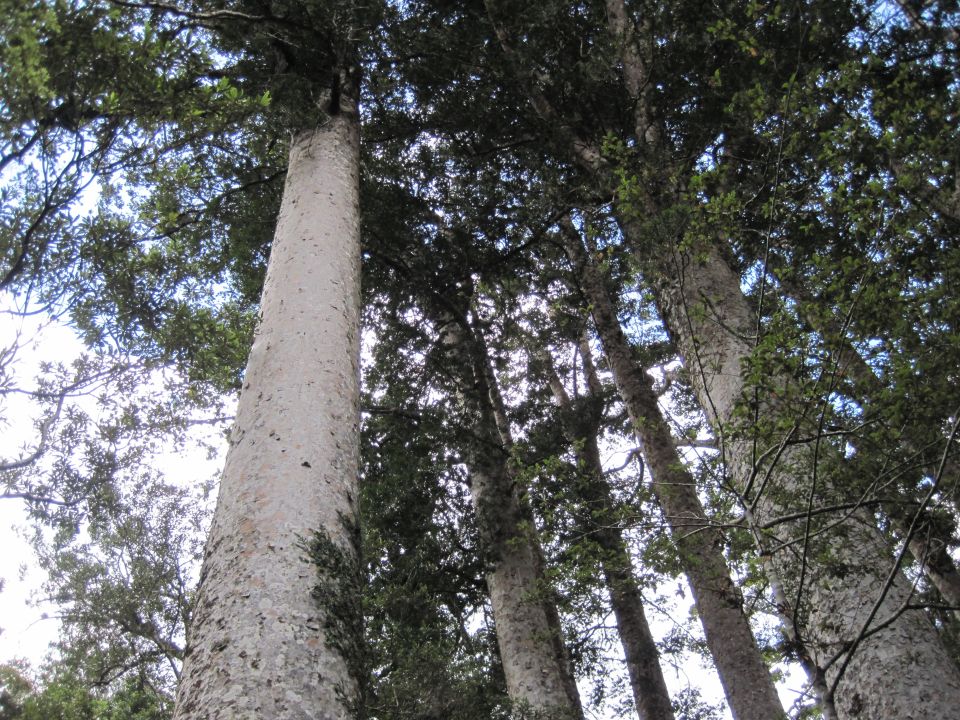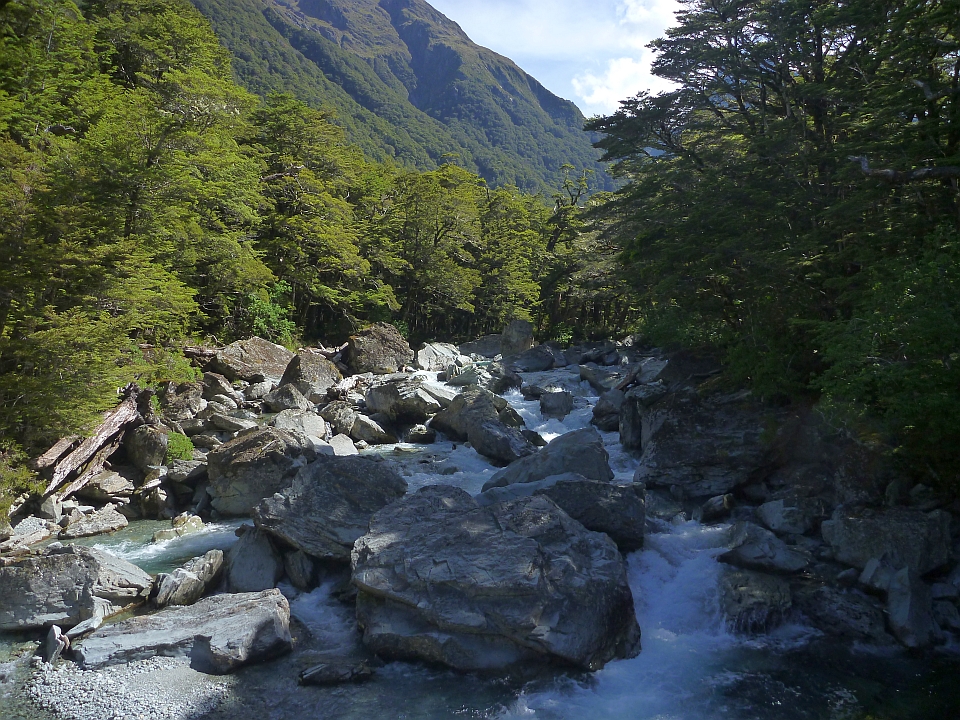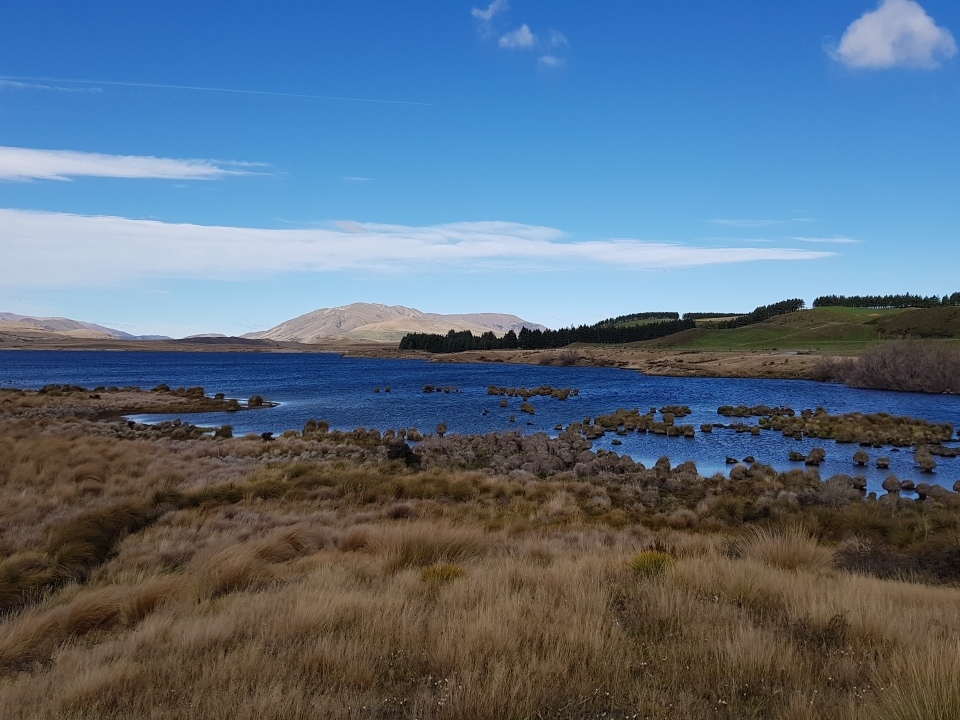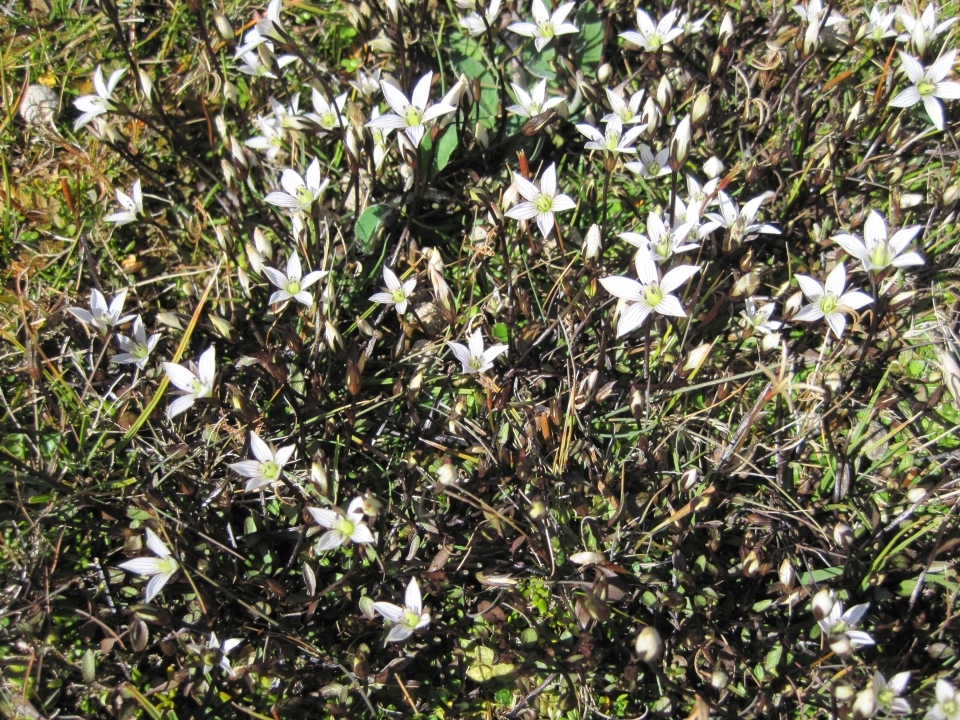Land plants are multi-celled.
Unlike other living things a plant:
- Can make its own food.
- Stores its food as starch.
- Can't move on its own.
Most plants can use the sun's energy to make food through photosynthesis. Plants are unable to move on their own. Most plants are rooted to the ground. There are four main types of plants:
- Mosses and liverworts
- Ferns
- Conifers
- Flowering plants.
Tropical countries usually have more plant species than temperate countries like New Zealand. New Zealand has only 2,500 native plant species. Most grow nowhere else. Included are 185 grasses, 93 hebe species and 20 conifers. Some 2,000 lichens and 500 mosses have also been named.
Forest giants
Māori had names for most plants. The first Europeans to visit the country found it hard to put names to some plants. This was because they were not like any plants they had seen before. New Zealand has two main forest types:
- Southern beech forest grows from Northland south to Fiordland. It grows mainly on the drier eastern side of mountains, on foothills and in the cooler south. Beech can grow in very poor soil, and often covers ridges and mountain tops.
- Conifer–broadleaf forest grows throughout New Zealand. It grows on the wetter western mountainsides. Kauri forest is a type of conifer–broadleaf forest. Kauri grow from Coromandel Peninsula northwards.
- Often forests are a mix of both beech and conifer.
Conifer–broadleaf forest
These forests look like tropical jungle. Most of the trees have thick, shiny, evergreen leaves. These forests have many layers, including:
- some very tall trees above the canopy
- a canopy of large trees
- sub-canopy trees and tree ferns
- a shrub layer
- a thick layer of ferns, seedlings and other ground plants.
Beech forest
Beech forests are the most common type of native forest in New Zealand. Beech trees flower in spring and are wind pollinated. New Zealand has five species of beech tree. Each grow in different soils and climates:
- Hard Beech and black beech are found in the lowland areas of the North Island and northern South Island.
- Red beech grows in the foothills and inland river valleys
- Silver beech grows in higher, wetter areas
- Mountain beech grows in the mountains.
Flowers and fruit
The amount of berries, fruit and seeds that grow changes from year to year. A warm summer and heavy flowering is usually followed by a huge crop of berries, fruit and seed in autumn. Cold summers slow flowering and less fruit grows.
From mountains to the sea
Different habitats have different plants. The mountains are home to tussocks, daisies, and shrubs with bright berries. Swamps and river banks have rushes, cabbage trees, flax and bulrushes.
On the coast, trees like karaka and ngaio have thick, tough leaves that can put up with salt winds.
Plants of Ō Tū Wharekai
 During the field trip you will see lots of unusual plants. Ō Tū Wharekai is an important site for kettle holes where rare plants grow. Many of the plants in this area can survive cold winters and hot, dry summers.
During the field trip you will see lots of unusual plants. Ō Tū Wharekai is an important site for kettle holes where rare plants grow. Many of the plants in this area can survive cold winters and hot, dry summers.
Ready for a quiz? Try the "Plants" interactive activity.

